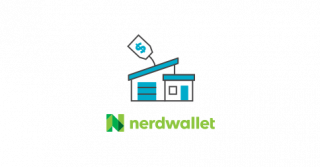Welcome to the world of home affordability, where your dreams of homeownership start to take shape in the form of numbers, calculations, and strategic planning. The journey towards buying a house is as thrilling as it is complex, but understanding what you can afford is the first step. Let’s dive deep into the key factors and calculations that will guide you through figuring out how much house you can comfortably afford.
Before you start browsing listings or daydreaming about backyard barbecues, a solid grasp of your finances is essential. This means assessing your income, savings, existing debts, and understanding your credit profile. These elements lay the groundwork for determining how much you can spend on a house without stretching your finances too thin. Ideally, you want your housing cost to fit comfortably within your monthly budget, respecting the balance between your dream home and a dream you can afford.
Additionally, anecdotal evidence suggests that unexpected expenses can and do occur, potentially impacting your savings and financial stability. Thus, it’s prudent to have a buffer, generally advised as three months’ worth of payments, including your potential mortgage and current debts. This safety net can help you navigate unforeseen financial challenges and ensure that you can keep up with your mortgage payments during tough times.

- Explore your home affordability with our Affordability Calculator. Source: @ NerdWallet – nerdwallet.com
Determining how much house you can afford is significantly influenced by your debt-to-income ratio (DTI). This key financial metric compares your total monthly debts, including potential mortgage payments, to your monthly pre-tax income. Lenders use DTI to gauge your ability to manage monthly payments and determine your qualification for a mortgage. Generally, your housing expenses should not exceed 28% of your monthly income, ensuring you have enough wiggle room for other expenses and savings.
The role of your credit score cannot be overstated when it comes to affordability. A solid credit score can open the doors to more favorable loan terms and interest rates, allowing you to afford more house or enjoy lower monthly payments. If your DTI ratio and credit score are well-positioned, lenders might offer you more competitive mortgage products, enhancing your purchasing power.

- Using Rocket Homes Affordability Calculator to gauge what you can afford. Source: rockethomes.com
Exploring loan options is another pivotal step in understanding home affordability. From conventional loans to government-backed options like FHA and VA loans, each comes with its set of qualifications, down payment requirements, and implications on how much you can borrow. For instance, FHA loans might be a good fit if you’re looking at a lower down payment and have a modest credit score, whereas conventional loans might be more appealing with a higher credit score and the ability to avoid mortgage insurance with a 20% down payment.
Down payments and mortgage insurance play crucial roles in the overall cost of your mortgage. A larger down payment can reduce your monthly payments and save you money on interest and insurance over the life of the loan. Understanding these aspects can help you make informed decisions about which loan type best fits your financial situation and homebuying goals.

- Ready for home buying? Enhance your loan terms with better financial health. Source: @ NerdWallet – nerdwallet.com
When it comes to applying affordability rules, the 28/36 rule is a commonly used guideline. This rule suggests that no more than 28% of your gross monthly income should go toward housing costs, and not more than 36% toward total debt payments, including your mortgage. To personalize these calculations and explore different scenarios, utilizing online calculators can provide a detailed estimate of what you can afford. However, remember these tools offer estimations, and your actual affordability may vary based on numerous factors including interest rates and your financial changes over time.
Also essential is understanding the limitations of these online tools. They provide a useful starting point but can’t account for all nuances of your financial situation. Consulting with a financial advisor or mortgage professional can provide clarity and tailor recommendations to your specific case.

- Finding the right home starts with understanding what you can afford. Source: rockethomes.com
As you prepare for the homebuying process, boosting your savings for a down payment and closing costs can significantly affect your loan terms and home affordability. A robust savings account not only helps with upfront costs but also demonstrates to lenders your financial responsibility, potentially leading to better loan offers.
Understanding the distinction between what you can pre-qualify for and what you can actually afford is crucial. While lenders might offer you a large loan, the monthly payments may not fit comfortably within your budget. Ensuring you can live with your mortgage payments without sacrificing your lifestyle or financial goals is key to long-term homeowner happiness. By adhering to these guidelines and carefully planning, you’ll be well on your way to purchasing a home that fits both your dreams and budget.




